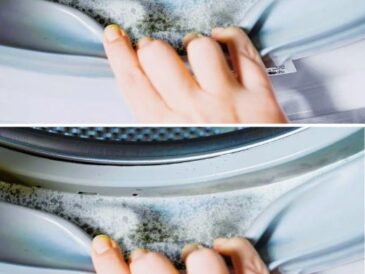1. Create a Baking Soda Paste
- Mix 3 tablespoons of baking soda with a small amount of warm water to form a thick paste.
- Baking soda acts as a natural abrasive and helps break down grease without damaging the surface of the pot.
2. Apply the Paste
- Spread the baking soda paste generously over the greasy areas of the pot.
- For stubborn spots, let the paste sit for 10–15 minutes.
3. Add White Vinegar
- Pour a small amount of white vinegar over the baking soda paste.
- The reaction between vinegar and baking soda creates bubbles, loosening the grease.
4. Scrub Thoroughly
- Use a scrubbing pad or sponge to scrub the pot in circular motions.
- For corners and crevices, use an old toothbrush to get into hard-to-reach areas.
5. Wash with Dish Soap
- Wash the pot with warm water and a good-quality dish soap to remove any remaining residue.
6. Rinse and Dry
- Rinse the pot thoroughly under running water to remove all traces of the cleaning solution.
- Dry it immediately to prevent water spots or rust (for metal pots).
Bonus Tips for Different Pot Materials
For Stainless Steel Pots
- Sprinkle baking soda directly on the pot’s surface and add a few drops of vinegar.
- Scrub gently to avoid scratching the stainless steel.
For Non-stick Pots
- Avoid harsh scrubbing pads that can damage the coating.
- Use a soft sponge and be gentle during cleaning.
For Cast Iron Pots
- Avoid using vinegar as it can strip the seasoning.
- Instead, use coarse salt and a bit of oil to scrub away grease.
Preventing Grease Buildup in the Future
- Clean Immediately: Wash pots right after cooking to prevent grease from hardening.
- Use Hot Water: Hot water breaks down grease faster than cold water.
- Choose the Right Cleaning Tools: Use non-abrasive tools for delicate pots and tougher scrubbers for durable materials.
- Season Your Pots: Properly seasoning cast iron or carbon steel creates a natural non-stick surface that prevents grease adhesion.
Why This Method Works
Baking soda and vinegar are powerful natural cleaners. Baking soda’s alkaline properties break down grease, while vinegar’s acidic nature dissolves sticky residues. Together, they create a bubbling reaction that lifts grease away from the surface, making it easy to scrub off.
FAQs
1. Can I use this method for burnt grease?
Yes, this trick works well for burnt-on grease. Let the baking soda paste sit longer (30 minutes to an hour) before scrubbing.
2. Is this safe for all pot types?
This method is safe for most pots, but avoid using vinegar on cast iron or copper pots. For delicate surfaces, use softer cleaning tools.
3. What if the grease doesn’t come off completely?
Repeat the process. Persistent grease may need a second round of cleaning to fully remove.
4. Can I use other cleaning agents?
Lemon juice, hydrogen peroxide, or commercial degreasers can also be effective. However, natural solutions like baking soda and vinegar are safer and eco-friendly.
5. How often should I deep-clean my pots?
Deep-clean your pots every few weeks or as soon as you notice grease buildup.
Conclusio
No more scrubbing endlessly or throwing out greasy pots! With this simple trick, you can restore your pots to their former shine. Baking soda and vinegar are affordable, natural, and effective solutions for stubborn grease. Try it today, and enjoy a kitchen full of clean, grease-free cookware!




